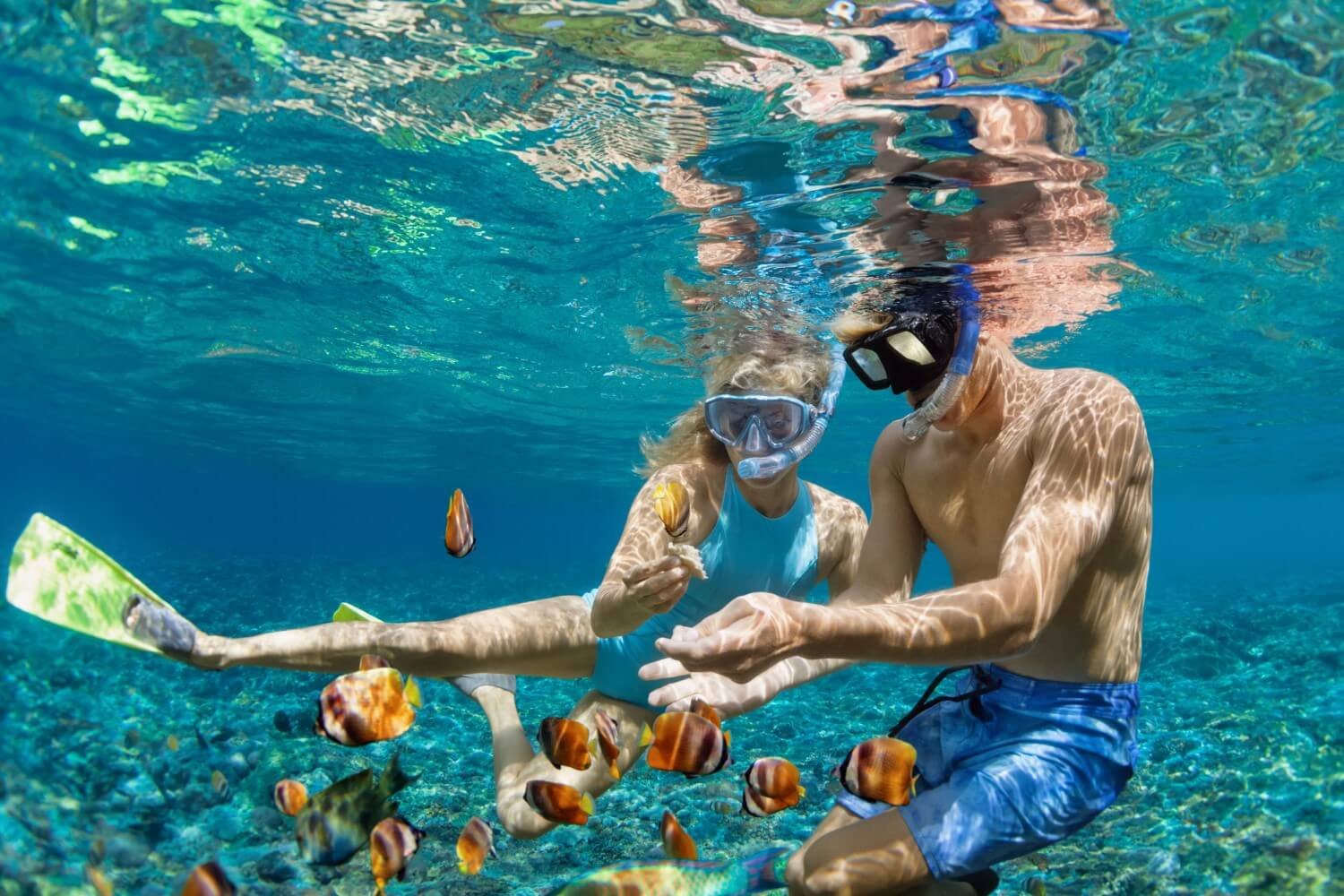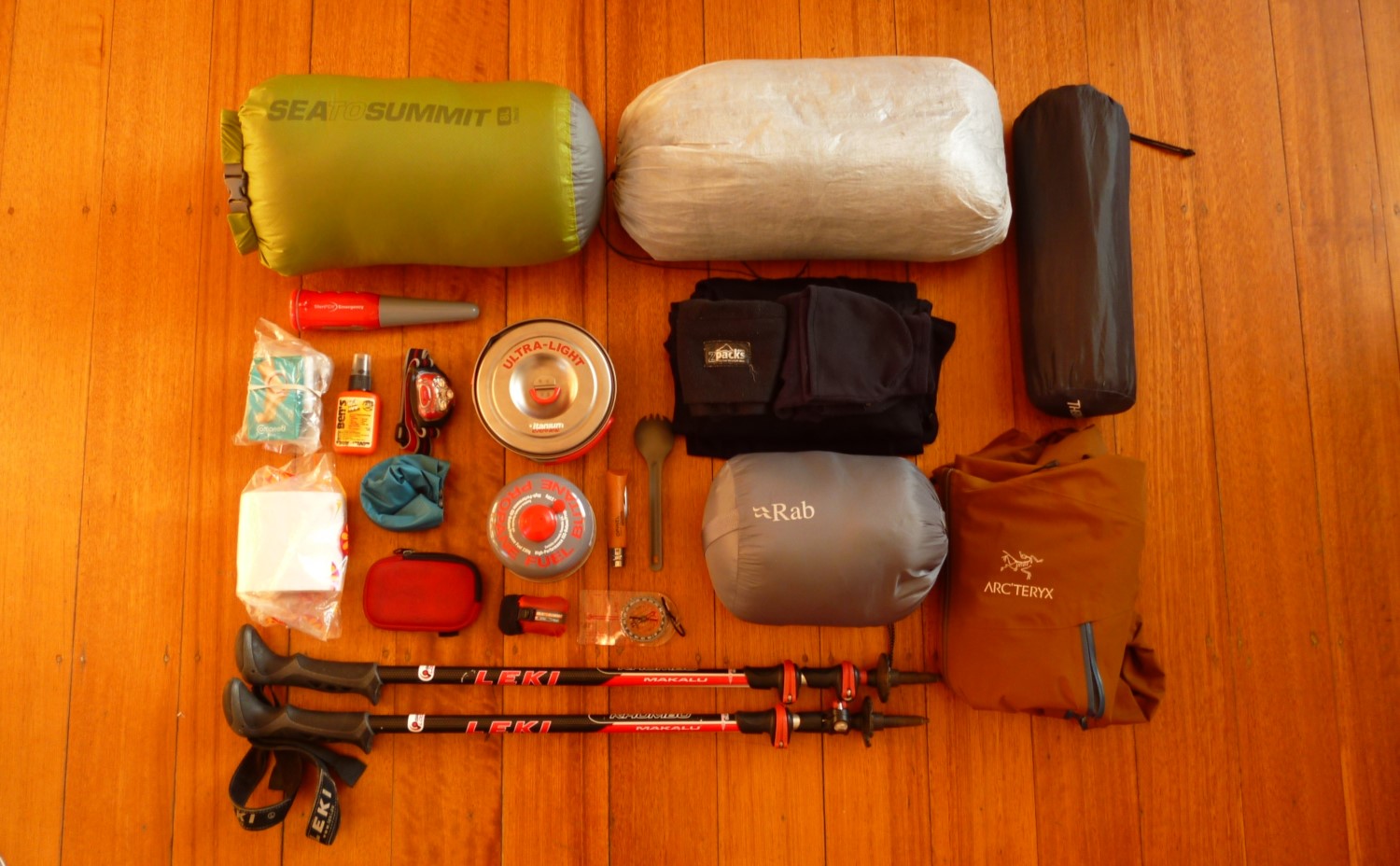best snorkels of 2023
JUMP TO: CRESSI CORSICA / PHANTOM AQUATICS DRY SNORKEL / AQUALUNG NAUTILUS TRAVEL / CRESSI SUPERNOVA / SCUBAPRO APNEA / TUSA PLATINA II HYPERDRY SNORKEL / AQUALUNG IMPULSE 3 / RIFFE STABLE SNORKEL / BUYING ADVICE
Author: Rose Martin
The Short Version
Best All-Rounder: Cressi Corsica
Best on a Budget: Phantom Aquatics Dry Snorkel
Best for Traveling: Aqualung Nautilus Travel
Best for Beginners: Cressi Supernova
Best for Freediving: Scubapro Apnea
Best for Comfort: Tusa Platina II Hyperdry Snorkel
Best for Choppy Conditions: Aqualung Impulse 3
Best for Durability: Riffe Stable Snorkel
The Long Version
The humble snorkel may have originated as little more than a hollowed-out stick used primarily by fishermen, but it’s now a vital piece of equipment for heaps of water-based activities.
When used with a mask, snorkels allow the user to marvel face-down at the underwater world while receiving a steady supply of air. This means you don’t have to raise your head every few seconds to breathe, which is part of what makes snorkeling such a tranquil experience.
But it doesn’t stop there – snorkels are also used by those who spend as much time below the water as they do on top of it. Freedivers need to take deep and uninterrupted breaths at the surface to prep for their impressive breath-hold dives, and this can be tricky in rough conditions. By including a snorkel in their gear, freedivers can make sure they get those steady breaths no matter how choppy the water is.
What’s more, whether it’s to find a dropped mask, to save your air while searching for a dive site, or to reach the boat safely when a storm hits during your dive, snorkels are super handy for scuba divers too.
Although snorkels were simple things in the past, there are now tones of models available with a range of designs, styles, and fancy features for you to choose from.
That’s why here we’ve put together this handy guide to the best snorkels around – so, whether you’re a snorkeler, freediver, or scuba diver, you can find the snorkel that’s right for you.
If you love reading this review of the best snorkels, then you'll likely love reading some of our other snorkeling and diving content:
Need To Know What To Look Out For?
Shopping for your first snorkel and not sure which features you require? Then be sure to check out our buying advice at the bottom of the article.
Best All-Rounder: CRESSI CORSICA
BEST FOR: Snorkeling, scuba diving, freediving
DESIGN: Classic
PURGE VALVE: No
ATTACHMENT MECHANISM: Snorkel clip
MATERIAL: Hypoallergenic silicone (mouthpiece), flexible polymers (tube)
FLEXIBILITY: High
PRICE: $
PROS: Lightweight and can be folded, flexibility ensures comfort, simple and streamlined
CONS: Lacks purge valve, no splash guard
The Cressi Corsica might not look like much, but that doesn’t mean it’s not one of the best snorkels out there. In fact, its sleek, minimalistic design makes it an awesome snorkel for freediving as well as snorkeling because it hardly creates any drag in the water.
Plus, the lack of fancy features, like a splash guard, seal, or purge valve, means that there’s far less chance of this snorkel breaking or performing poorly. Just bear in mind that although this is a decent trade-off for advanced snorkelers, it might not be for complete beginners (who might prefer all the help they can get keeping their snorkel dry).
The no-frills design has also helped to keep costs low, and this snorkel is one of the most budget-friendly options on our list. But the cost isn’t the only thing that’s low – this is one seriously lightweight snorkel too.
On top of that, we love that it’s flexible enough to be stashed in a BCD pocket, so it’s a great back-up snorkel for scuba divers who don’t enjoy having a snorkel attached to their mask throughout their dive (and let’s face it, most don’t!). This lack of rigidity also makes this a comfortable snorkel that won’t feel like an iron rod attached to the side of your face.
Finally, the large tube diameter ensures full breaths, while the U-bend has been designed to boost clearing (although it won’t be as easy as clearing with a purge valve).
Seriously versatile and travel- (and wallet!) friendly – the Cressi Corsica has a lot to offer water enthusiasts of all kinds.
Best on a Budget: PHANTOM AQUATICS DRY SNORKEL
BEST FOR: Snorkeling, scuba diving
DESIGN: Dry
PURGE VALVE: Yes
ATTACHMENT MECHANISM: Quick-release keeper
MATERIAL: Silicone
FLEXIBILITY: Rigid (with a flexible corrugated tube)
PRICE: $
PROS: Great features at a low price, all-day comfort, lots of colors available
CONS: Clip could be more reliable
If you’re after a snorkel packed full of beginner-friendly features that won’t break the bank, then look no further than the Phantom Aquatics Dry Snorkel.
This snorkel features a seal at the top of the tube that kicks into action as soon as the snorkeler dips below the surface, so hardly any water enters the tube itself and breathing remains easy. Plus, the snorkel features a purge valve with a self-draining mechanism, so most of water that does make its way inside the snorkel will trickle away unnoticed. And, in the rare event you have to clear the snorkel yourself, you’ll find it a breeze thanks to the highly functional purge valve.
While these features make this an awesome snorkel for snorkelers, it’s also a great choice for divers – the corrugated section of the snorkel means the mouthpiece can fall away from the face of the diver, avoiding irritation on the dive. We also love that the mouthpiece is super comfortable and can be replaced, increasing the lifespan of your snorkel.
Although we like the quick-release button that detaches the snorkel from your mask (it’s super easy to use even with gloves on), be warned that this attachment isn’t the sturdiest – your snorkel might be whisked away if you’re diving in serious current. It’s not a super travel-friendly option either, since the tube is mostly rigid and the extra features have added to the bulk and weight.
However, if you’re a beginner who hates clearing your snorkel, then you should definitely consider the Phantom Aquatics Dry Snorkel.
Best for Traveling: AQUALUNG NAUTILUS TRAVEL
BEST FOR: Snorkeling, scuba diving, freediving
DESIGN: Classic
PURGE VALVE: No
ATTACHMENT MECHANISM: Clip
MATERIAL: Silicone
FLEXIBILITY: Very high
PRICE: $$$
PROS: Super lightweight, extremely flexible, streamlined design reduces drag
CONS: No seal, splashguard, or purge valve, slightly expensive
Tired of wasting your precious luggage space on bulky snorkel gear? Well, no more… Introducing the Aqualung Nautilus Travel snorkel.
This classic snorkel is a traveler’s best friend thanks to its light weight and incredible foldability – you can bend this snorkel into a palm-sized bundle and pop it into its handy travel case. Not only does this help when you’re moving from A to B, but it also means you can keep this snorkel in a pocket or clipped onto your BCD when your scuba diving.
The extreme flexibility also makes this one comfortable snorkel, and it can be removed from your mask in an instant thanks to the sturdy clip-attachment system. The lack of a purge valve means you’ll have to clear the snorkel the old-fashioned way (with one hearty breath), and there’s no splash guard either, so this might not be the best choice for anxious or beginner snorkelers.
Despite the lack of fancy features, this snorkel comes with a surprisingly high price tag. However, if you’re an avid traveler, and portability is the name of the game, then the Aqualung Nautilus Travel snorkel is worth every penny!
Best for Beginners: CRESSI SUPERNOVA
BEST FOR: Snorkeling, scuba diving
DESIGN: Dry
PURGE VALVE: Yes
ATTACHMENT MECHANISM: Quick-release keeper
MATERIAL: Silicone
FLEXIBILITY: Rigid (with a flexible corrugated tube)
PRICE: $
PROS: No need to clear after duck diving, effective splashguard, ‘drop away’ mouthpiece
CONS: Slightly too rigid (apart from the flexible part), requires careful maintenance
Next up we have the Cressi Supernova, an ideal snorkel for beginner snorkelers and divers.
This dry snorkel features a splash guard at the top of the snorkel, reducing the amount of water that enters in the first place, and a super effective purge valve that lets you expel any accumulated water in just one effortless breath.
Plus, the top of the snorkel seals itself via a float mechanism when you dive below the water’s surface, so when you come back up your tube won’t be filled with water – what a win. These features are great for beginners, who can spend their time getting used to being in the water rather than panicking about water entering their snorkel.
The snorkel is certainly on the rigid side, reducing overall comfort slightly, but we love that it features a large corrugated section. This allows the mouthpiece to fall away from the face when not in use, making this a popular snorkel among scuba divers as well as snorkelers. Plus, the mouthpiece is ergonomically angled, partially making up for the lack of flexibility in the tube, and it can be replaced when needed too.
Like all dry snorkels, the Cressi Supernova needs some TLC from time to time to avoid sand and other debris damaging the seal mechanism. But, if you treat it right, there’s no reason why this sturdy snorkel shouldn’t be right by your side as you progress from a beginner to advanced snorkeler.
Best for Freediving: SCUBAPRO APNEA
BEST FOR: Snorkeling, scuba diving, freediving, spearfishing
DESIGN: Classic
PURGE VALVE: No
ATTACHMENT MECHANISM: Clip
MATERIAL: Silicone
FLEXIBILITY: High
PRICE: $$
PROS: Foldable, lightweight, can be shortened, streamlined design reduces drag
CONS: No seal, splashguard, or purge valve
The Scubapro Apnea is a classic J-shaped snorkel designed primarily for freediving – but that’s not all it’s good for!
The Scubapro Apnea has been designed to mirror the face of the user which, combined with a lack of bulky features, results in a super streamlined snorkel. And we just can’t get enough of the detachable top – if you prefer to dive or snorkel with a short tube, and reduce drag even further, simply pop off the top. Plus, this feature, combined with the flexibility and light weight, make this snorkel an incredibly travel-friendly option.
The lack of drag makes this a popular snorkel for freedivers and means that you’ll barely notice this snorkel while scuba diving (yay). And, if you really hate wearing a snorkel while diving, you’ll be pleased to know that the Apnea can be stashed in a pocket throughout the dive thanks to its super flexible construction – and once you’re back at the surface it will ping back into shape.
People who go spearfishing will also love this snorkel because of its streamlined design and flexibility (perfect for when you’re peering into crevices in search of your prey).
As always, the lack of dry snorkel features might disappoint some beginner snorkelers, and it isn’t the cheapest classic snorkel we’ve come across either. However, if you’re confident in the water, and want a snorkel that will let you slice through the water as efficiently as possible, then this could be the one for you.
Best for Comfort: TUSA PLATINA II HYPERDRY SNORKEL
BEST FOR: Snorkeling, scuba diving
DESIGN: Semi-dry
PURGE VALVE: Yes
ATTACHMENT MECHANISM: Permanent swivel
MATERIAL: Silicone
FLEXIBILITY: Low (with highly flexible corrugated tube)
PRICE: $$$
PROS: Heaps of colors available, very effective purge valve, extremely comfortable
CONS: Not actually a dry snorkel (despite the name), expensive
Not sure whether to go for a classic or dry snorkel? Then why not try out the Tusa Platina II Hyperdry Snorkel, a semi-dry snorkel (don’t be fooled by the name) that offers the best of both worlds.
Unlike classic snorkels, the Platina comes equipped with a splash guard and purge valve to reduce water intake and aid clearing. Yet, unlike a dry snorkel, this snorkel lacks a complex sealing mechanism at the top of the tube. This means that the amount of water entering the tube is massively reduced, but you don’t have to worry about the seal mechanism getting clogged with debris, or failing altogether, and shortening the lifespan of your snorkel.
On top of that, the Platina is one of the comfiest snorkels on the market. The tube itself is nicely curved to avoid or minimize contact with the side of the head, and the mouthpiece is a dream to hold too. Plus, the corrugated section of the tube means the mouthpiece can fall away from the face and won’t bug scuba divers underwater. Even the attachment clip allows a generous amount of rotation, so your snorkel will always be in the optimal position. And, for those of you that love to color coordinate your gear, you’ll be pleased to know that this snorkel is available in a huge range of colors for you to choose from.
The rigid design of this snorkel means it isn’t the most travel-friendly option out there, and it comes with a pretty hefty price tag too. But, if you want a super comfortable snorkel with some nice extra features, then the Tusa Platina II Hyperdry Snorkel is an excellent contender.
Best for Choppy Conditions: AQUALUNG IMPULSE 3
BEST FOR: Snorkeling, scuba diving
DESIGN: Semi-dry
PURGE VALVE: Yes
ATTACHMENT MECHANISM: Clip
MATERIAL: Silicone
FLEXIBILITY: Rigid and flexible (with flexible corrugated tube) models available
PRICE: $$$$
PROS: Great drainage system, dual valves for easy purging, comfortable replaceable mouthpiece
CONS: Lacks top seal, slightly expensive
The Aqualung Impulse 3 is another awesome semi-dry snorkel that makes getting rid of excess water a walk in the park (and avoids the hassle of a complex seal mechanism).
The first line of defense against water intake is the annular valve, which steers most water out of the tube long before it can hit the mouthpiece. Plus, any splashes that do evade this valve will be automatically drained via the second valve at the base of the snorkel.
We also love the extra-large reservoir at the base of the snorkel, which holds accumulated water out of the way of the all-important breathing path. And, when it’s time to get rid of this water, all it takes is gentle exhale thanks to the awesome purge system.
Another great feature of the Impulse 3 is the mouthpiece – it’s super comfortable, it’s available in two sizes, and it’s even replaceable, so you won’t have to pick up a brand new snorkel every time you wear away the mouthpiece (which happens a lot if you clench your teeth to hold your snorkel tight when the water is rough!).
Finally, this snorkel comes in both rigid and flexible (featuring a corrugated tube section) models. So, whether you like your mouthpiece to fall away or rigid snorkels that don’t ‘wobble’, you won’t have to miss out.
It might not be the cheapest snorkel out there, but if you’re after something that will perform exceptionally well in rough waters without compromising on comfort, then the Aqua Lung Impulse 3 might be just what you’re looking for.
Best for Durability: RIFFE STABLE SNORKEL
BEST FOR: Snorkeling, scuba diving, freediving
DESIGN: Semi-dry
PURGE VALVE: Yes
ATTACHMENT MECHANISM: Hinged snorkel keeper
MATERIAL: Vinyl and rubber (tube), silicone (mouthpiece)
FLEXIBILITY: Rigid (with flexible corrugated tube)
PRICE: $$$$
PROS: Streamlined despite features, top unlikely to snag on debris, great dump valve
CONS: Lacks seal, slightly large mouthpiece
Last, but by no means least, on our list of the best snorkels around is the Riffe Stable, a flexible snorkel that can stand up to the test of time.
Not only does the corrugated portion of the tube provide great flexibility, but it’s also surprisingly tough and won’t buckle under pressure. In fact, the entire snorkel can be folded and unfolded repeatedly without showing any signs of wear and tear (which is great if you need to stash it in a BCD pocket).
The top of the tube is shaped like a shark’s fin (so there’s definitely some prank potential here!), and it does a great job at keeping debris like seagrass away. It also slices through the water super efficiently, and the dry-top design means very little water will make its way inside the tube.
Plus, the purge valve at the base of the snorkel is one of the most effective on the market, and we love that it’s not as bulky as many other options out there. In fact, the Riffe Stable lacks bulk in general, and the sleek design has made it a popular choice among freedivers as well as snorkelers and divers. The simple design and lack of a seal mechanism also means this snorkel requires very little maintenance – just a quick freshwater rinse after your sesh is all it takes (yay).
It certainly isn’t the most affordable snorkel out there but, if you’re looking for an awesome balance of functionality and durability, you can’t go wrong with the Riffe Stable.
BUYING ADVICE FOR SNORKELS
As we’ve seen, snorkels aren’t as simple as they first seem – they come in a range of shapes and styles and there are tons of features to choose from. So, let’s take a closer look at some of the things you should keep a close eye on when you’re shopping around for a snorkel of your very own.
Design
CLASSIC: Classic snorkels are also called J-shaped snorkels because, well, they’re shaped like a ‘J’. These are the most basic snorkels and they lack special features that keep the inside of the tube ‘dry’. Although this may put off some beginners, they’re popular among more advanced snorkelers because of their lightweight, streamlined design, and general robustness.
DRY: Dry snorkels come with heaps of features that keep the inside of the snorkel as dry as possible (hence the name). As well as splash guards and purge valves, they feature some kind of seal mechanism at the top of the tube that prevents water from entering the snorkel when it’s submerged in water. This eliminates the need to clear the snorkel with a strong exhale after a duck dive, so they’re popular among beginners.
SEMI-DRY: Semi-dry snorkels are the midway house between classic and dry snorkels. While they lack a seal mechanism at the top of the tube, they typically come with a purge valve and splashguard. This means that they won’t keep things as dry as a fully dry snorkel, but they will reduce water intake and make clearing a lot easier than with a classic snorkel.
Features
SPLASHGUARD: There’s nothing high-tech about splashguards. They’re simple bits of plastic designed to reduce the amount of water entering the top of the tube. They’ll add a bit of weight and drag to your snorkel, but they can make snorkeling in larger waves a lot more pleasant, so if you aren’t freediving, it’s a pretty handy feature to have.
PURGE VALVE: Water that enters classic snorkels is cleared out of the top of the tube via a forceful exhale, but this isn’t the case with dry and semi-dry snorkels thanks to their purge valves. These snorkels come with a water reservoir at the base of the snorkel, and any water that enters the snorkel accumulates here. Eventually, the air pathway will become blocked by excess water, and this is where the purge valve comes in handy – a gentle exhale pushes the accumulated water out of the reservoir and, voilà, the snorkel is cleared.
FLEX TUBE: Dry and semi-dry snorkels often (but not always) come with a flexible corrugated section of the main tube, irrespective of how flexible the main body of the tube is. This allows the mouthpiece to be adjusted for a comfortable fit while in use, and it also lets the mouthpiece fall away from the face when not in use (like when you’re diving or swimming beneath the surface). Although this can be a potential weak spot in the snorkel’s construction, the space between your face and the mouthpiece has made this a popular feature among scuba divers and freedivers alike.
Construction
FLEXIBILITY: The main tube of snorkels varies dramatically when it comes to flexibility – some are so flexible that they can fold into tiny parcels, while others are solid structures that have zero budge.
While flexible snorkels have obvious advantages when it comes to portability and comfort, they don’t always perform as well as sturdier models (the worst ones tend to collapse occasionally while snorkeling, temporarily blocking your air supply). Ultimately, how flexible a snorkel you go for will probably come down to how often you’ll be using and what for – flexible snorkels are awesome travel-friendly back-up options, but if you’re a serious snorkeler, you’ll probably want a bit more rigidity.
MOUTHPEICE: Snorkel mouthpieces are typically made from silicone, but the softness will vary. Some people like them squishy, while others prefer something that you can really sink your teeth into – it really is a matter of personal preference. Just make sure you’ve done your research in advance, so you don’t end up with the wrong one. We also recommend going for a snorkel with replaceable mouthpieces (especially if you’re a chewer!) if you want to save some cash in the long term.
ATTACHMENT CLIP: There are various clips that can be used to hook up your snorkel to your mask. Some are semi-permanent (you’ll have to undo the mask strap and unthread it through the snorkel for removal) while others have super easy quick release buttons that eject your snorkel in seconds.
The more permanent clips are ideal if you always use your mask and snorkel together (like when snorkeling), but aren’t so great if you like to pop it on and off (perhaps you use your snorkel for freediving but not for scuba diving). Although quick-release buttons can be super handy, especially if you’re in cold water and wearing gloves, just be warned that some are a little too quick to release, and you’ll have to keep an eye on your snorkel to make sure it hasn’t popped off by itself.
Purpose
Okay, so now we know what all of those terms mean. But how do you know which features you need (or don’t need) in a snorkel. Well, it all comes down to purpose really!
SNORKELING: Beginner snorkelers tend to go for snorkels with all the trimmings – splashguards, seal mechanisms, purge valves… you name it. These features minimize water intake into the tube and make clearing your snorkel a breeze, so you can spend your time getting used to being in the water.
Advanced snorkelers will probably start to find the bulk (and maintenance) that comes with feature-packed snorkels a pain and want something lighter and a little more streamlined – but remember that you’ll have to deal with more water in your tube!
SCUBA DIVING: If you’re a diver that hates snorkels (like many do), why not go for a flexible snorkel you can stash in your BCD pocket and whip out during emergencies? Better safe than sorry, after all. Alternatively, if you prefer to keep your snorkel attached, why not play around with flexible and non-flexible tubes – some divers love mouthpieces that fall away while others prefer flexible tubes that stay firmly in place (it’s a matter of personal preference really).
FREEDIVING: The best freediving snorkels are super streamlined and lightweight to minimize drag as you dive down into the depths. This means they’re typically classic J-shaped snorkels lacking any fancy features. This type of snorkel is also popular among advanced snorkelers, divers, and spearfishers who spend lots of time beneath the surface too.
MORE INFORMATION
If you loved this gear review article, then you'll likely love reading our other snorkeling and diving related content:
Or check out our Gear Reviews Overview Page or Knowledge Base for more epic outdoor info and gear guides. Happy snorkeling!





















